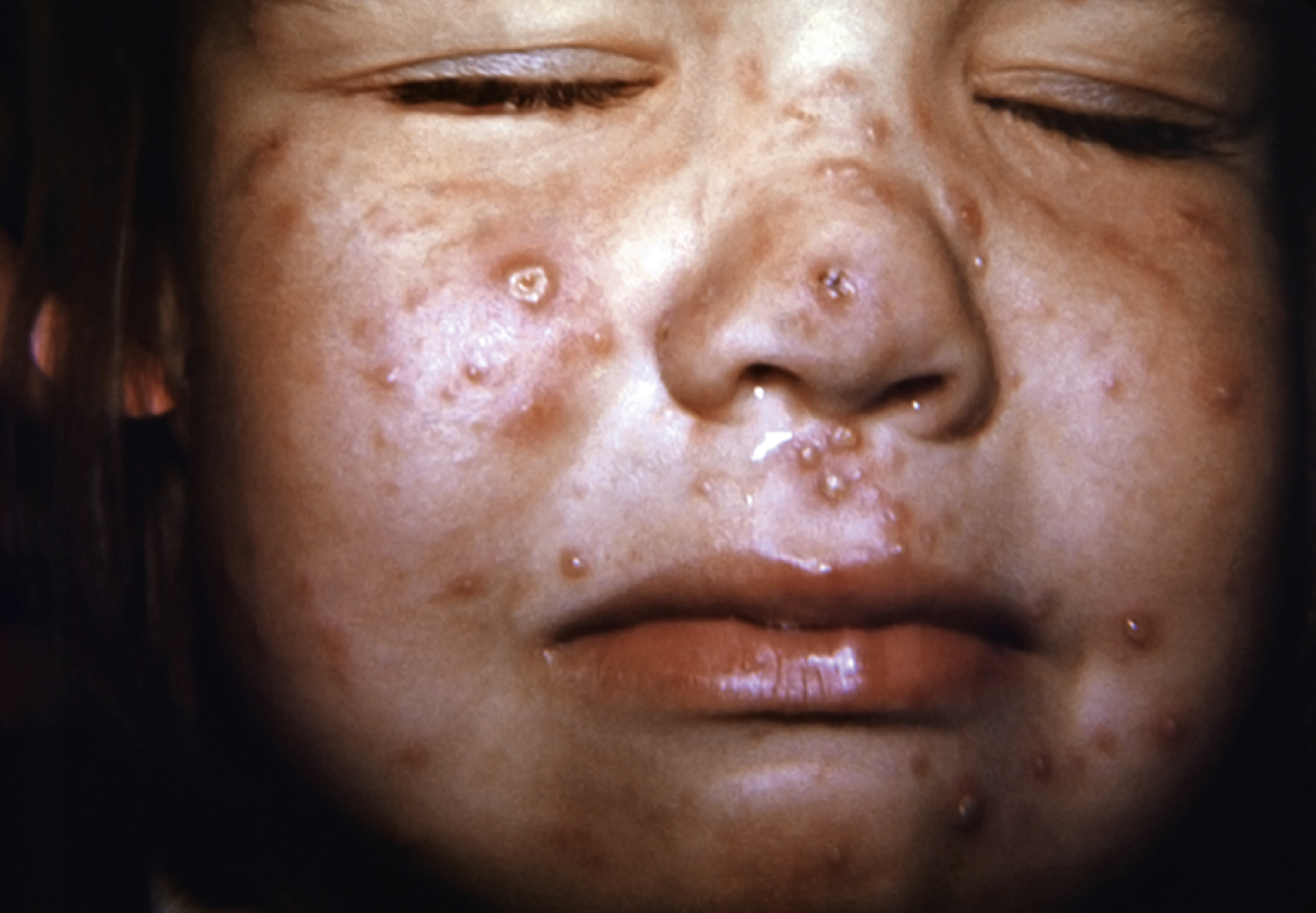chickenpox /chik″ənpoks′/ [AS, cicen + ME, pokke] , an acute, highly contagious viral disease caused by a herpesvirus, varicella zoster virus. It occurs primarily in young children and is characterized by crops of pruritic vesicular eruptions on the skin. The disease is transmitted by direct contact with skin lesions or, more commonly, by droplets spread from the respiratory tract of infected persons, usually in the prodromal period or the early stages of the rash. The vesicular fluid and the scabs are infectious until entirely dry. Indirect transmission through uninfected persons or objects is rare. The diagnosis is usually made by physical examination and by the characteristic appearance of the disease. The virus may be identified by culture of the vesicle fluid. Also called varicella. ▪ OBSERVATIONS: The incubation period averages 2 to 3 weeks, followed by slight fever, mild headache, malaise, and anorexia occurring about 24 to 36 hours before the rash begins. The prodromal period is usually mild in children but may be severe in adults. The rash, which is highly pruritic, begins as macules and progresses in 1 or 2 days to papules and, finally, to vesicles surrounding an erythematous base and containing clear fluid. Within 24 to 48 hours the vesicles turn cloudy and become umbilicated, are easily broken, and become encrusted. The lesions, which erupt in crops so that all three stages are present simultaneously, first appear on the back and chest and then spread to the face, neck, and limbs; they occur only rarely on the soles and palms. In severe cases, laryngeal or tracheal vesicles in the pharynx, larynx, and trachea may cause dyspnea and dysphagia. Prolonged fever, lymphadenopathy, and extreme irritability from pruritus are other symptoms. The symptoms last from a few days to 2 weeks. ▪ INTERVENTIONS: Routine treatment consists of rest; medications to reduce fever; applications of topical antipruritics, such as wet compresses, calamine lotion, or a paste made from baking soda and water; or oral antihistamines, given for the relief of itching. Infected vesicles may be treated with neomycin-bacitracin, and systemic antibiotics may be given if the secondary bacterial infection is extensive. People who are susceptible and at risk for severe disease when exposed to the infection may be passively protected with zoster immune globulin, varicella-zoster immune globulin, immune serum globulin, or zoster immune plasma. A vaccine for active immunization is available for individuals 12 months of age and older. Babies born to women in whom chickenpox develops within 5 days of delivery are especially likely to have a severe case of the disease. One attack of the disease usually confers permanent immunity, although recurring episodes of herpes zoster occur, especially in elderly or debilitated people, resulting from reactivation of the virus. Herpes zoster virus, like all herpesviruses, lies dormant in certain sensory nerve roots after primary infection. ▪ PATIENT CARE CONSIDERATIONS: Chickenpox in childhood is usually benign. Few cases require hospitalization. It may be serious or fatal in immunocompromised people, such as those infected with human immunodeficiency virus, those receiving chemotherapy or radiotherapy for malignant disease, those who have undergone organ transplantation, those with congenital or acquired defects in cell-mediated immunity, or those receiving high doses of steroids. Common complications are secondary bacterial infections, such as abscesses, cellulitis, pneumonia, and sepsis, and hemorrhagic varicella (tiny hemorrhages that may occur in the vesicles or surrounding skin). Less common complications are encephalitis, Reye’s syndrome (associated with the use of aspirin), thrombocytopenia, and hepatitis.

